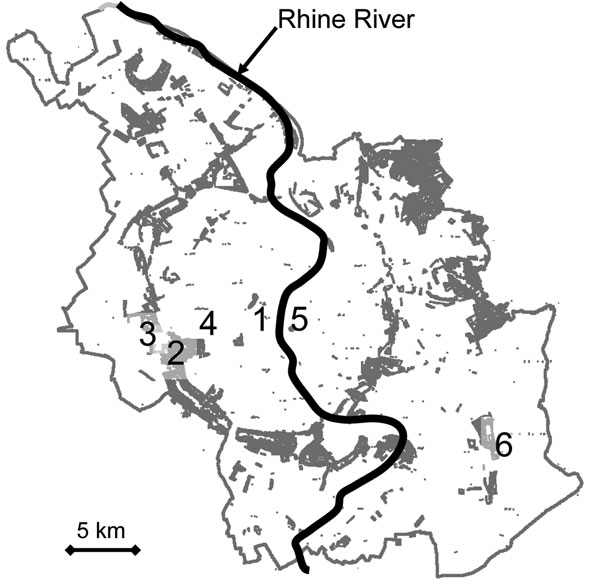Volume 13, Number 8—August 2007
Letter
Nephropathia Epidemica in Metropolitan Area, Germany
Figure

Figure. City of Cologne, showing its corridor of wooded public parks (shaded area) and the location of the exposure sites in the Stadtwald stadium area: 1, Cologne cathedral; 2, Stadtwald; 3, RheinEnergie Stadium; 4, university; 5, trade fair; 6, airport.
Page created: June 30, 2010
Page updated: June 30, 2010
Page reviewed: June 30, 2010
The conclusions, findings, and opinions expressed by authors contributing to this journal do not necessarily reflect the official position of the U.S. Department of Health and Human Services, the Public Health Service, the Centers for Disease Control and Prevention, or the authors' affiliated institutions. Use of trade names is for identification only and does not imply endorsement by any of the groups named above.